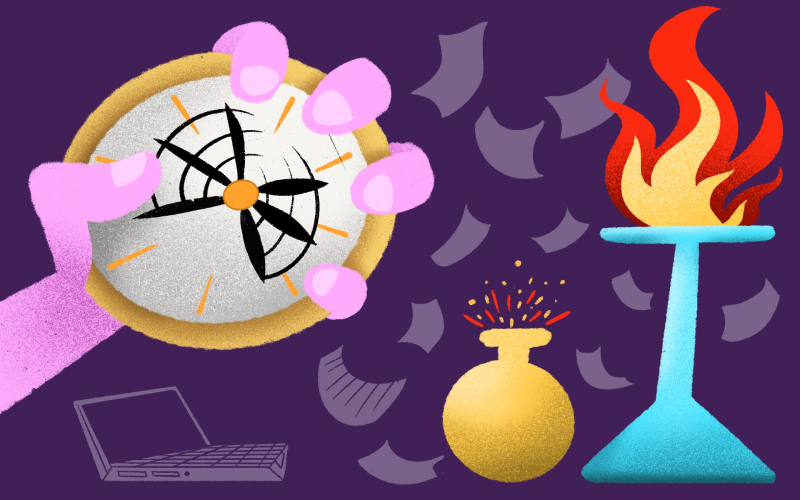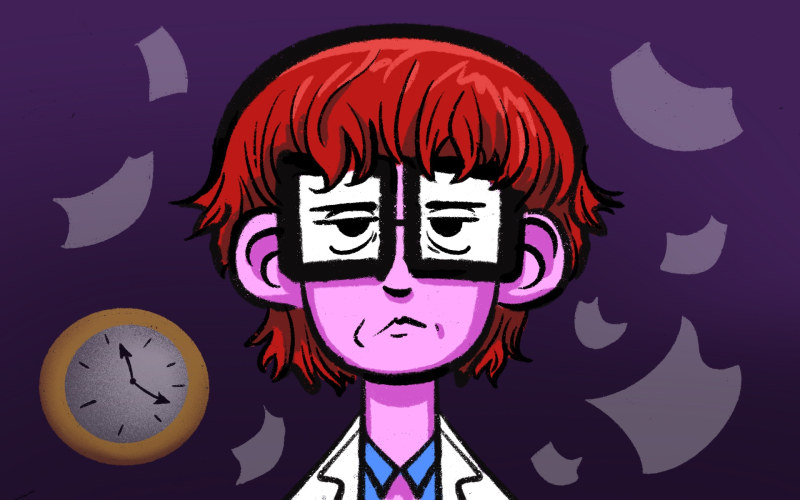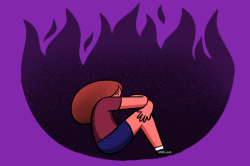Contents:
- How often do scientists face the issue of burnout?
- What are the most common causes of burnout in an academic environment?
- How to prevent burnout
- Preventing burnout in academia: common practices
- Sharing responsibility when making decisions
How often do scientists face the issue of burnout?
Burnout is the state of emotional, physical, and mental exhaustion caused by excessive and prolonged stress. Reasons include increased workload, intense schedule, perfectionism, and other factors. It’s not uncommon among young scientists – according to a recent study by specialists from Belgium and the Netherlands, some 9% of researchers are at a high risk of emotional burnout; another 30% are likely to develop a distanced and negative attitude towards their work – which is in itself a precursor to burnout.
See also:
The Results of ITMO’s First Large-Scale Study of Quality of Life in Academia
How To Relax Properly and Not Burn Out: Advice From a Psychologist
What are the most common causes of burnout in an academic environment?
According to the aforementioned study, the most important risk factors are a lack of work-life balance as well as the pressure to produce publications: the emphasis on articles, citations, and impact factors boosts the competition among young researchers.
Psychologists describe many causes of professional burnout, including some that are relevant in academia, too. Researchers, lecturers, and students may find the following familiar:
- Irregular working hours: scientists often work for more than the usual 40 hours per week. This is caused by the need to perform prolonged experiments or work non-stop to, for example, write replies to peer reviews under pressing deadlines. This kind of work can take a lot of time and demand more than the usual workday;
- Expectations VS results: the hypotheses we make at the start of our work may end up proven false by the end. And it takes a lot of time and effort to get there. Even though a hypothesis being disproven is still a useful result, the experience can be demotivating. Many young researchers may also be affected by peer reviews and rejection of their grant applications. Impostor syndrome, too, can be an issue for researchers;
- Unstable salary: in financial terms, many researchers depend entirely on the grants they win. A lot of that money goes towards materials, equipment, and other expenses, resulting in irregular income levels;
- High workload: there are many things a researcher has to deal with in their work. They need to not only conduct research, but also teach, apply for grants, analyze data, and do administrative work – such as procure materials and draw up partnership contracts.
“Still, it’s important to note that we scientists are lucky in that we work on important things: some create new medicine, some develop unique materials, some improve existing technologies. All our efforts are directed towards boosting everyone’s quality of life. That is one of the biggest sources of motivation for those of us in science. Another important thing is that we do things that are interesting to us. It is that combination of passion and significance that drives scientists forward,” explains Elena Ushakova.
Illustrations by Dmitry Lisovsky / ITMO.NEWS
How to prevent burnout
If the whole team is struggling with burnout, this responsibility falls on its leader as the one managing the atmosphere, controlling the performance, and offering advice on productivity.
There are several principles you can rely on to prevent burnout in your team:
- Learn from your mentors. Even the most experienced of leaders once worked under someone else’s guidance. According to Elena Ushakova, her former superiors from the start of her career remain her inspiration to this day.
“It was rather challenging for me to take on a leadership role as I’d never learned to do it. I am learning on the spot now, putting new ideas into practice. I was lucky enough to start my career at what is now the International Research and Educational Center for Physics of Nanostructures, guided by wonderful supervisors who always found ways to support and guide me. This is the kind of atmosphere that I want to establish as a PI. My fellow leaders are now creating a safe space at ITMO where everyone will be able to comfortably grow, ask for help, or offer assistance when needed,” says Dr. Ushakova.
- Maintain a work-life balance. This is a challenge for anyone, even when you are your own boss – and it gets even harder when you need to manage a team with a dozen members. Here, various digital tools come to the rescue. For instance, with DeskTime you can track the working time of your team members, check their workflow by tracking the URLs they visit, and remind them to take breaks. Another app, RescueTime, is a time tracker that forms reports about the pages visited, showing the ones that took up the most time. The app can also block distracting pages and send tips on maintaining your focus during the day.
- Foster informal communication between members of the team. Even though the atmosphere at work should be far from homely, your colleagues can become your friends through shared interests and informal communication. It can be a great idea to go to a hobby-related club together after work. There are several such clubs at ITMO where you can paint or play board games with your colleagues – the topical events are held at the university’s art coworking and announced by ITMO’s Staff Support Office.
Illustrations by Dmitry Lisovsky / ITMO.NEWS
See also:
Meet the Winners of ITMO.Love Awards
ITMO University Hosts Its First What? Where? When? Tournament
Preventing burnout in academia: common practices
Teal organizations. These are organizational structures without a strict hierarchy – instead, the management is based on horizontal connections. Here, teams, departments, and employees work independently, united by common goals and values, not plans and KPIs. This principle significantly simplifies the communication between professors and young scientists, making adaptation easier for the latter.
“I first experienced this during my internship at Trinity College Dublin, where it was normal for professors to catch up with students over coffee after work. I find the atmosphere at ITMO conducive for just this kind of horizontal connections and informal communication,” shares Elena Ushakova.
Psychological testing. You can use various surveys and tests to identify symptoms of burnout and discover the schedule that works best for you.
- DISC (Dominant Influential Steady Compliant) is a test that identifies your behavioral traits and their influence on the way you communicate with your coworkers. It focuses on assertiveness, social skills, stability, and responsibility.
- The situational leadership model will help you find the best type of leadership (supporting, coaching, delegating, or directing) depending on the competencies and motivation of an employee.
- The Maslach Burnout Inventory (MBI) evaluates the type and level of burnout based on three criteria: emotional depletion, mental distance from the job, and reduced professional efficacy.
“I’ve learned about these tools only about six months ago thanks to a course at ITMO, and now I try to assign my colleagues with tasks based on external factors, their professionalism, and interests. This way, both the level of stress and the possibility of missed deadlines get significantly lower,” explained Elena Ushakova.
Illustrations by Dmitry Lisovsky / ITMO.NEWS
Sharing responsibility when making decisions
It’s important that not only the head of the team bears responsibility for making decisions. Apart from relieving the leader of the team from some of their burden, this will also allow the team members to feel the actual significance of their actions. There are many different practices for collective decision-making – for example, brainstorms, when each participant shares as many ideas as possible and then the best one is chosen out of the lot.
The RAPID model can also come in handy. It stands for several steps, each assigned to a single team member:
- Recommend: offer a suggestion, collect the data, and share information for analysis with other members of the team;
- Agree: accept or decline the suggestion;
- Input: evaluate facts and offer recommendations during the entire decision-making process;
- Decide: make the final decision;
- Perform: implement it.
“We discuss all important matters and arising problems with my colleagues. It’s important for me to see our research from different points of view. We regularly talk through our tasks and plans for the coming week or two. This shared responsibility and collective discussions help us gain confidence in the decisions we make, lower down the pressure put on the head of the team, and increase the level of trust between the members,” concludes Dr. Ushakova.






